Ungulates – The Hoofed Mammals
These are a unique group of mammals who have hoofed feet. Ungulates are land-dwelling animals with weight-bearing and locomotive characteristics. Some of the aquatic mammals fall under the category too while their hooves may not be apparent. Due to their diversity, they were wrongly classified under the outdated “Ungulata” clade; but later corrected based on their hooves and other genetic similarities. Zebras, antelopes, mules and marine mammals like the cetaceans are common examples of these animals.
Scientific Classification
Kingdom | Animalia |
Phylum | Chordata |
Class | Mammalia |
Mirorder | Euungulata |
Clade | Pan-Euungulata |
Species
Ungulates have several species that share similarities. The Mammal Diversity database has identified 286 modern species. They can be divided between two orders: Perissodactyla and Artiodactyla, each one classified based on the toe structure.
Perissodactyla (Odd-toed Ungulates)
Name | Description |
Equidae | These species are known for their fast speed and fortitude. Common examples include horses, zebras and asses. |
Tapiridae | They are the Tapir species with unique snouts and mostly found in forests. |
Rhinocerotidae | They are thick-skinned and horned rhinoceroses living in the Asian and African regions. |
Artiodactyla (Even-toed Ungulates)
Camelidae | They are found in harsh environments such as deserts and mountains. Common species include camels and llamas. |
Suidae | These species have an omnivorous diet with bristly hair such as pigs. |
Cervidae | They have shedding and growing antlers found in forest and grassland regions. Common species include the deer. |
Bovidae | Most important species for the mammal and agricultural ecosystem. These species include cattle and antelopes. |
Delphinidae | They have evolved from their terrestrial ancestors but have adapted to marine life. These species commonly include oceanic dolphins with streamlined bodies. |
Physical Characteristics
The Ungulate species vary significantly in terms of physical characteristics. However, they do possess close similarities among them.
Size and Weight: Ungulates come in all sizes. Some species are larger such as giraffes which are exceptionally tall and hippos which are several tons heavy. The smaller ones such as deer and antelopes are regular sized and can weigh 30 kg on average. Some chevrotain species can be very small, weighing less than a kg.
Speed: Agility and movement are significant characteristics of these species. They have strong bodies and legs to support their movements across various ecological environments. Ungulates can cover several miles of distance in a short period of time. The fastest Ungulate species is the pronghorn antelope, covering over 40 mph.
Hooves and Movement: Ungulates are defined by their hooves, either solid or cloven. These provide them traction and help them move and manage weight. In the Perissodactyla order, a central toe supports the entire body weight whereas, in Artiodactyla, the weight is distributed between the two main toes. The hooves aid these animals walk across any surface with stability and ease.
Crania Appendages: Another unique feature that most Ungulates possess is cranial appendages such as horns or antlers. These physical features are used for various purposes. Some use them for self-defence while some use them to arouse their sexual partners. Antlers can easily grow again and hence some deers shed these annually which grow back soon. Horns on the other hand are often strong bone structures and are more permanent.
Coloration: With so many species, Ungulates have a variety of colors. One common trait among these colors is to camouflage or to confuse. For example, zebras have black and white stripes confusing predators and insects. The deers and antelope have a muted brown color which allows them to camouflage or hide behind trees and other forest environments without being caught easily.
Adaptive Features: Ungulates have adaptive physical features which enables them to survive in their habitat and fulfil several purposes. For example, giraffes have elongated necks through which they can reach high branches and eat plants and other food. Rhinoceros have thick skin to survive in thorny and harsh environments without hurting themselves.
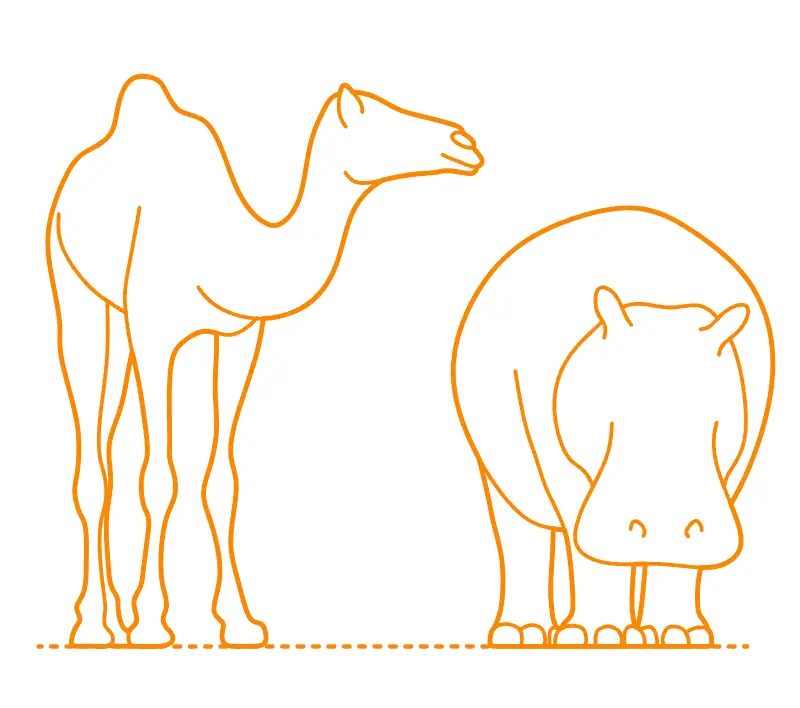
Size and Weight
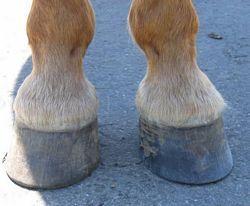
Hooves and Movement
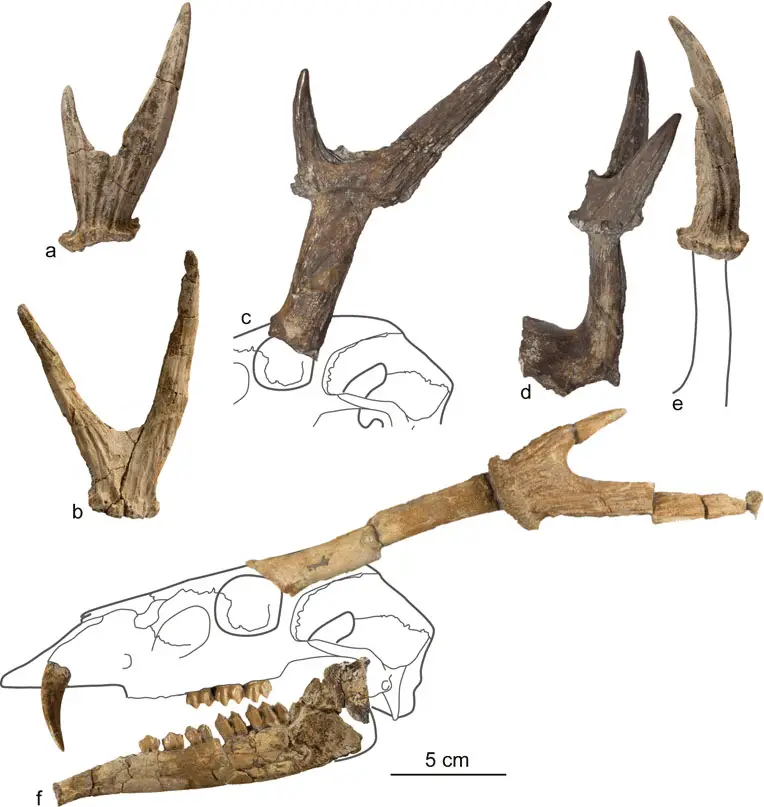
Crania Appendages
Distribution and Habitat
These animals are found across the globe in natural habitats such as the forests, deserts, grasslands and even the oceans. Most of the species are found in Asia, Africa, Europe and American regions. Their habitat is based on their food hunting and eating habits.
Ungulates don’t have a specific migration pattern; however, they like to cover great distances based on their needs. The partial migration allows them to discover the habitat that suits them and their fellows best for the season.
Diet and Digestion
Ungulates have such diverse species that they include both herbivores and carnivores. The herbivorous animals such as deers and cattle eat grass, leaves and plants. They have specialised molars to help chew the food and break it down into smaller particles. Similarly, the digestive system is designed to process the cellulose from the food to provide nutrients to the body.
The omnivorous ungulates such as pigs have a simpler digestive system which allows them to process plant and animal food easily. As compared to the herbivorous Ungulates, the carnivores have sharp canine teeth to hunt and grab their prey. Besides nutrients, these animals also require protein in their diet to survive a healthy lifestyle.
Behavioral Adaptations
Social Structures
Ungulate species have a complex social structure. Some show solitary behavior while others like to interact in groups. For example, buffalos move in large herds often for migration to avoid attack from predators. On the other hand, rhinos like to spend their time alone. The herd dynamics can vary too depending upon food resources or mating season.
Defensive Behavior
Ungulates fall somewhere in the centre or downwards the food chain hence they are vulnerable to large predators. This made them create defensive and survival strategies to protect against dangerous predators like the lions and tigers. Each species has its own way of defending itself. For example, musk oxen form a circle with calves in the centre when they are threatened by the wolves. Some herds prefer changing sudden directions when running to confuse their predators.
Communication
Vocalization, body postures and chemical signalling are main forms of communication among the Ungulates. Deers are known for scent marking to mark their territory or to indicate their breeding. These communication methods allow these animals to share information such as alerting from predators, arousing for sexual activities or raging.
Foraging and Feeding Adaptations
Ungulates have evolved various foraging strategies to maximize their efficiency in acquiring food. Grazers like bison and wildebeest continuously move to fresh grazing sites to exploit abundant grass resources, while browsers such as giraffes have long necks enabling them to reach leaves high up in trees that other herbivores cannot access. This adaptability in feeding allows ungulates to occupy a variety of niches within their ecosystems, impacting vegetation patterns and the overall landscape.
Since these mammals have several dietary needs to fulfil, they follow a foraging behavior to find their food. This means that they are on a constant hunt for food resources even if they have to travel distances. For example, grass eaters like Bison are on a constant move to find abundant grass areas. Hence, Ungulates adapt to their personal needs when it comes to their feed, which in turn impacts the larger ecological system.
Reproduction and Lifespan
The reproductive periods are highly dependent on the surrounding conditions. Since Ungulates are found across various regions and environments, they follow a seasonal breeding pattern to increase the chances of their offspring’s survival. In low temperature regions, the Ungulate species have a reproduction cycle with the birthing mostly in spring or summer months. In tropical regions, they align their breeding and mating with the rains so that food sources are plentiful.
Gestation periods vary based on individual species. For example deer follow a gestation period of 200 days while giraffes may take over 15 months to nourish the offspring. Parenting, especially mother care, is considered important across all Ungulate societies. The parent after birth takes care of the newborn until they are healthy enough, they then teach them survival skills and other social structures. These training and care ensure that the offspring is strong and healthy and utilize their resources better.
Mortality Rate and Lifespan
Larger Ungulate species have an average lifespan of 60-70 years while smaller ones survive around 10-20 years. Since Ungulates are prey to several wild predators, the young are often at risk. They take a few months or even years to learn the skill to escape from their predators and save their lives.
Similarly, harsh weather conditions such as winters, lack of food and disease spread also impact the mortality rates. Human activities have also impacted their survival significantly changing population dynamics at large.
Ecological Importance
Ungulates balance out several environmental factors such as species populations as well as the agricultural aspects. Their preying and foraging behaviors regulate plant and vegetation as well as the presence of nutrients. They are extremely impactful in the larger ecology where they also disperse seeds and create new habitats for other species.
Conservation Status and Efforts
There is an abundant quantity of Ungulates living across the globe. However, the IUCN has considered half of them as least-concerned for conservation and 35% indicating conservation issues. The ones that face survival issues are due to habitat loss or conflicts with human activities on agricultural lands. Efforts are needed to protect these Ungulate species to save their declining populations. Some of these include preserving their habitats, introducing anti-poaching measures and protecting them legally.
Ungulate Fun Facts
- Although classified as even or odd toed, the number of toes never match their classification label.
- Some Ungulates such as the giraffes give birth standing up which breaks the umbilical cord right away.
- Like ruminants, some Ungulates have a digestive system which ferments the food before extracting nutrients from it.
- Although terrestrial, hippos spend almost 16 hours a day in half water to keep their thick-skinned bodies cool.
- Some Ungulates such as Tapirs have excellent night vision to navigate, hide from prey and find food.
Cultural Value
Different Ungulate species are significant in different cultures. Hindus consider cows as a sacred animal and consider it a symbol or power. Reindeers are symbols of endurance and resilience in the Sami culture. They’re presence is also found in folklore and art which are their traditional pieces. African culture promoted zebras and antelopes for their speed and beauty. These Ungulate species are considered spiritual and sacred among this culture and looked upon with respect.
FAQs- Frequently Asked Questions
Q- Why are they called ungulates?
They are called ungulates because they are hoofed mammals.
Q- What are the different types of ungulates?
Two main types: Perissodactyla (odd-toed, like horses) and Artiodactyla (even-toed, like cattle).
Q- What is the definition of an ungulate?
Ungulates are mammals with hooves, either cloven or solid.
Q- What is the difference between ungulate and ruminant?
Ungulate refers to hoofed mammals, while ruminants are ungulates that chew cud with multi-chambered stomachs (e.g., cattle).
Q- What is an ungulate in anatomy?
An ungulate has hooves and is adapted for walking on its toes, using hooves for movement and weight support.
Q- What is the taxonomy of ungulate?
They belong to the clade Euungulata under the class Mammalia.
Q- Where are ungulates found?
Found worldwide, mainly in Asia, Africa, Europe, and the Americas.
Q- What is the digestive system of an ungulate?
Herbivores have multi-chambered stomachs for fermenting food, while omnivores and carnivores have simpler systems.
Q- How many stomachs do ungulates have?
Ruminant ungulates can have up to four stomach chambers.
Q- Which organ produces bile?
The liver produces bile.
Q- What stomach structure do ungulates that chew the cud have?
They have a rumen, one of the four chambers for fermenting food.
Q- Do all ungulates chew cud?
No, only ruminants (a subset of ungulates) chew cud.
Learn More About Ungulates
On this page, you are invited to browse our articles about some of the fascinating ways that ungulates behave.
These articles answer common questions about ungulates, including what they eat, where they are found, their reproductive cycles, and how they adapt to various environments.
Scroll down to learn more about the unique characteristics of hoofed mammals and discover why they thrive in diverse ecosystems across the world.
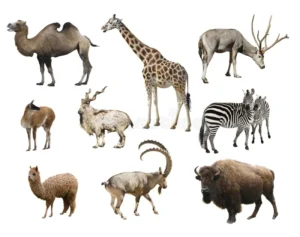
Artiodactyla (Even-Toed Ungulates): Nature’s Diverse Hoofed Mammals
The animal kingdom is filled with remarkable diversity, and among the most fascinating groups are the Artiodactyla or even-toed ungulates.
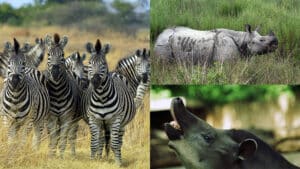
Perissodactyla (Odd-toed Ungulates): The Unique Hoofed Mammals
When we think of hoofed animals, horses, zebras, and rhinos often come to mind. These fascinating creatures belong to a
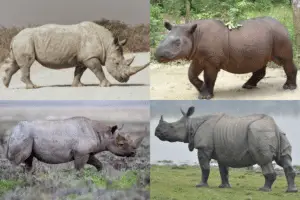
Rhinocerotidae: The Powerful and Endangered Family of Rhinoceroses
Rhinocerotidae, commonly known as the family of rhinoceroses, is one of the most fascinating and endangered groups of mammals on
